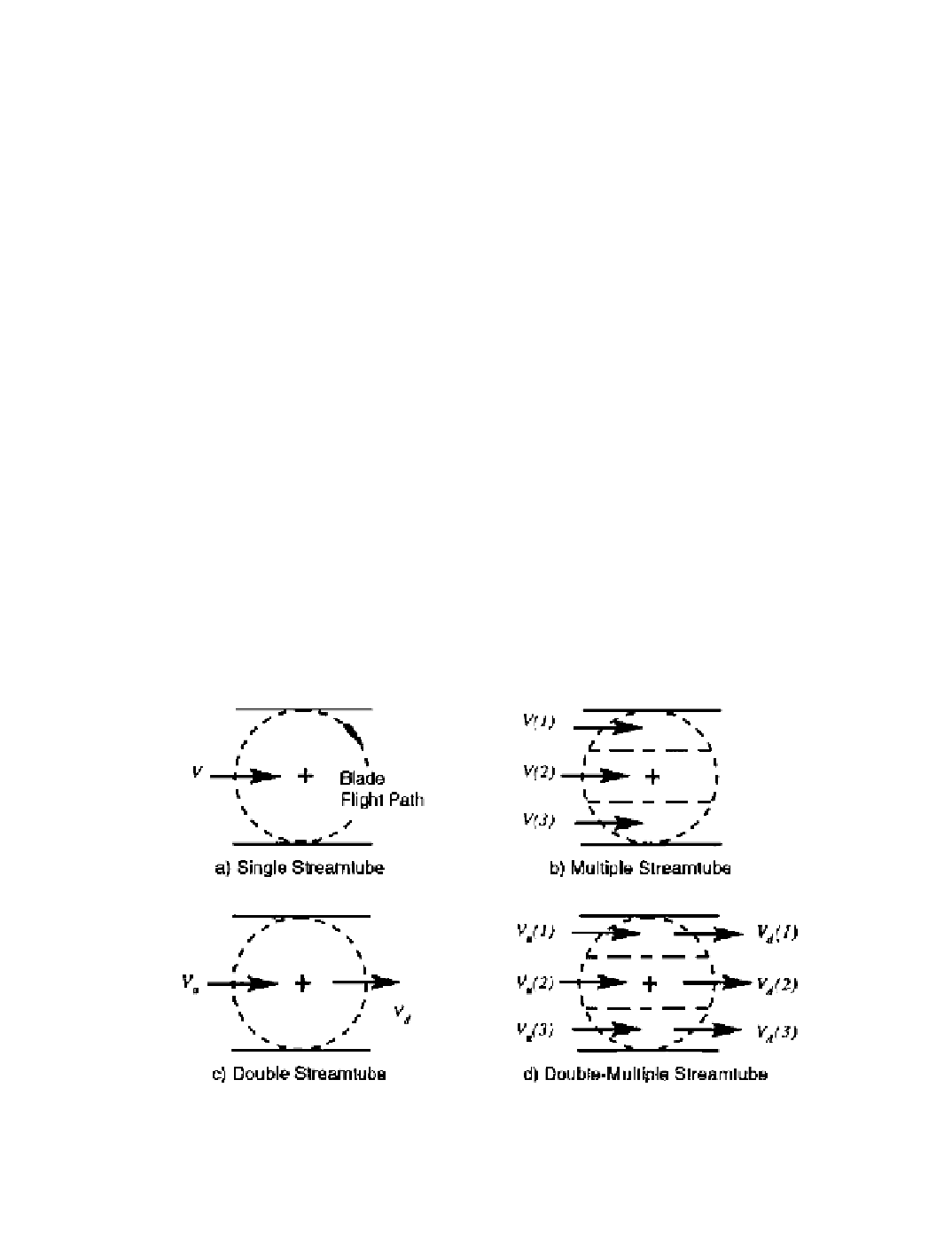Environmental Engineering Reference
In-Depth Information
Aerodynamic Analysis of Vertical-Axis Wind Turbines
Modern VAWTs are almost exclusively of the curved-blade design patented by G. Dar-
rieus [1931]. However, this type of wind turbine did not see extensive development until the
1970s when it was re-invented at the National Research Council of Canada [South and Rangi
1972]. Engineers there and at the NASA Langley Research Center [Muraca
et al.
1975] and
the Sandia National Laboratories [Blackwell and Reis 1974] undertook the analysis, design,
construction, and testing of Darrieus VAWTs. In the course of subsequent development proj-
ects, many aerodynamic models for the Darrieus rotor have been proposed, and these may be
classified into the following three groups:
--
Streamtube models
[Templin 1974, Wilson and Lissaman 1974, Muraca
et al.
1975,
Shankar 1975, Strickland 1975, Wilson and Walker 1981, Parashiviou 1981].
--
Fixed-wake vortex models
[Holme 1976, Wilson 1978, McKie
et al.
1978]
--
Free-vortex models
[Fannuci and Walters 1976, Strickland
et al.
1980, Wilson
et al.
1983]
These models vary considerably in their treatment of the flow, and no single approach is
available that covers all significant effects over the entire operating range of a VAWT, such
as
dynamic stall
,
variable induced flow
, and
wake crossing
by the downwind blade. The his-
tory and a description of the many analysis techniques used for the Darrieus rotor is covered
in a topic about Darrieus Rotor design [Paraschiviou 2002].
In streamtube models the induced axial velocity is calculated at the rotor by equating
the
time-averaged force
on the blades to the
mean momentum flux
through a streamtube of
fixed location and dimensions. Single, tandem, and multiple streamtubes have been used,
as illustrated in Figure 5-31 [Touryan
et al.
1987]. Streamtube models, with some excep-
tions [Wilson and Walker 1981, Paraschiviou 1981], predict fore-and-aft symmetry of flow
quantities. Aerodynamic forces are calculated from local angles of attack and local relative
velocities, using static airfoil lift and drag coefficients which may include post-stall behav-
Figure 5-31. Plan view sketches of various streamtube models used for aerodynamic
analysis of VAWT rotors.
(a) Single streamtube (b) Multiple streamtube (c) Double stream-
tube (d) Double-multiple streamtube [Touryan
et al
. 1987]

Search WWH ::

Custom Search